
Turmeric Questions? Here is Your Ultimate Guide to this Super Spice
Turmeric is a tropical plant native to the Indian subcontinent and Southeast Asia. Its broad green leaves and beautiful, intricate flowers make it popular in ornamental gardens.
Turmeric is an “herbaceous perennial,” so its leaves will die at the end of the growing season, but its roots will survive. It is a member of the ginger family and, like ginger, has edible roots called rhizomes.
You probably know turmeric as the bright yellow powder used in cooking. The rhizomes are dried and ground to make this familiar yellow spice. You can also buy fresh rhizomes at your local supermarket that look similar to fresh ginger but are orange and usually smaller.
However, turmeric is not just for cooking. This versatile plant is easy to grow, and you can use it in everything from curries to desserts, as a dye, for religious purposes, and in traditional medicines and beauty products.
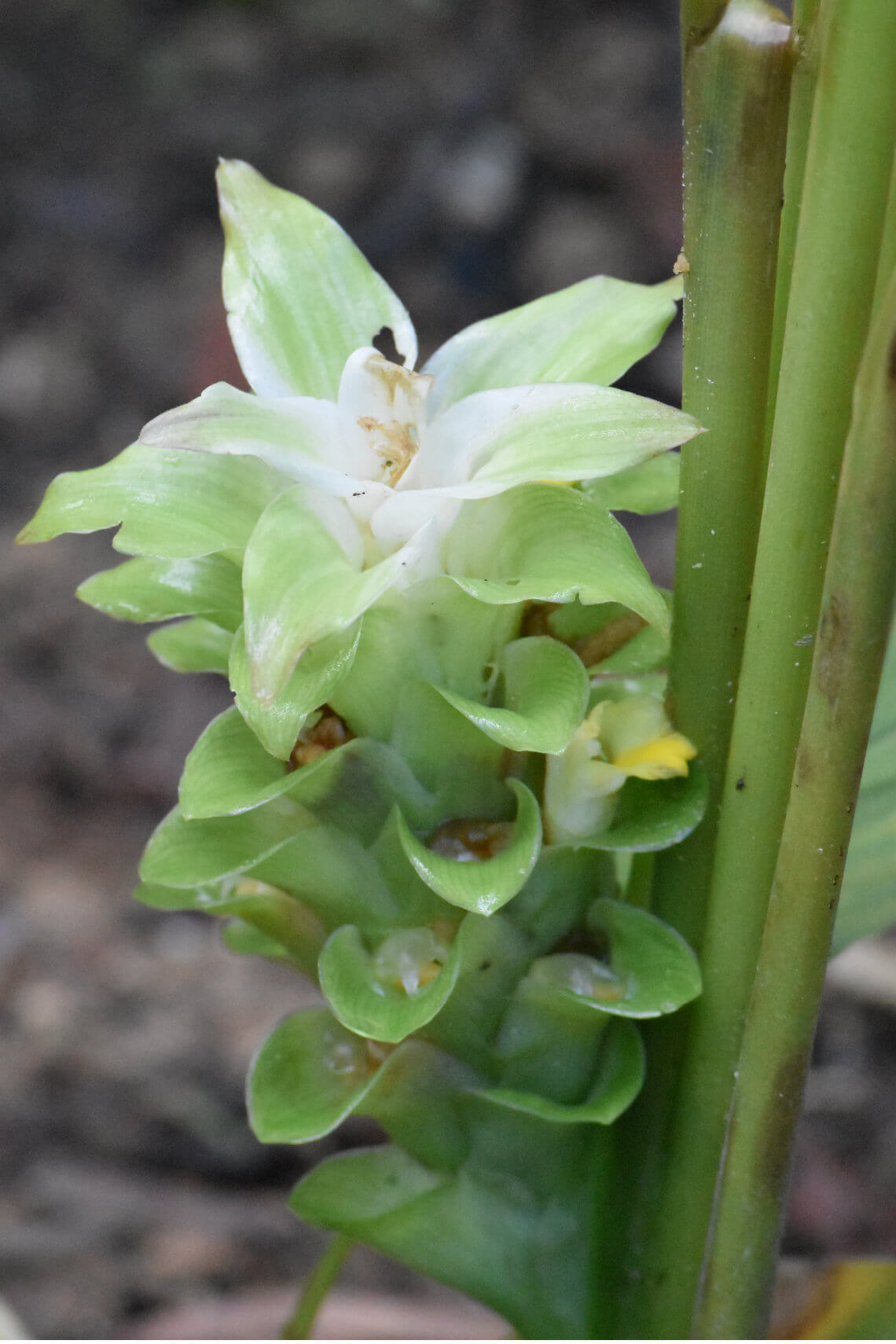
How Does Turmeric Grow?
It is easy to grow turmeric in a tropical climate. Just push a rhizome approximately 5 cm into well-drained, damp soil and wait for it to grow. However, you need to make more effort in less favourable conditions.
We can grow turmeric for most of the year and barely have to do anything to maintain our plants. Once our rhizomes are in the ground, nature does the rest, except for additional watering during dry spells.
You must wait until spring or summer to plant your rhizomes in cooler climates. In the meantime, you should store them in a cool, dark place. Allow them to develop a couple of ‘eyes’ and plant the rhizomes with these buds facing upwards once the weather is warm enough.
The rhizomes take approximately 8 to 10 months to mature. You can dig them up when the leaves turn yellow, and the stems wither. Just ensure you save a few roots for replanting in the following season.
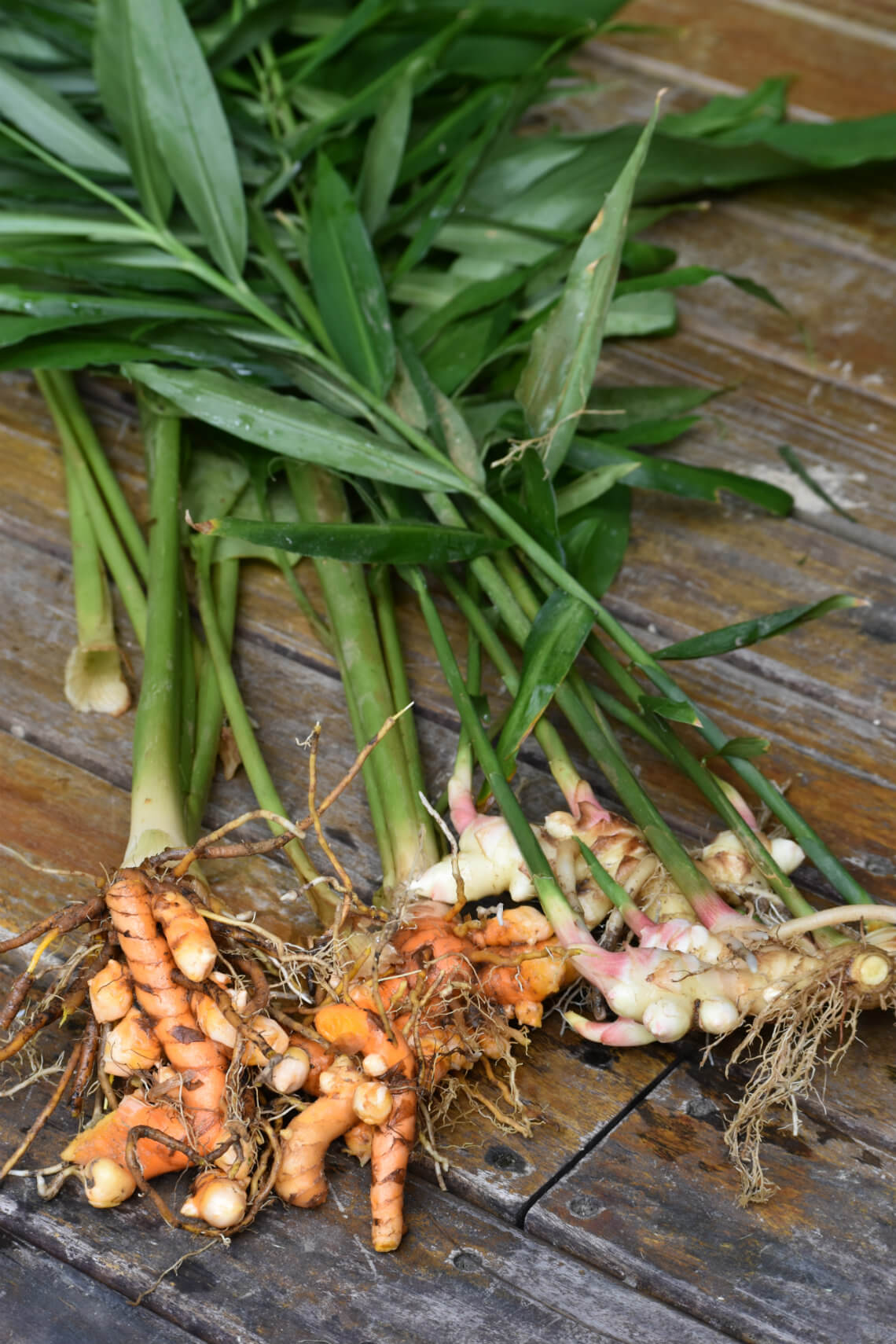
Climate, Water and Soil Needs
Turmeric grows best at temperatures of 20-30°C. Most areas in Australia should be warm enough in summer. Cooler climates have a shorter growing season than the tropics, and you will need to dig the roots up in winter to protect them from frost.
Turmeric likes water and thrives where there is good rainfall. To grow plants in a hot, dry climate, you must water them regularly to stop them from drying out and dying. They will also benefit from some dappled shade.
However, the soil mustn't become waterlogged, as this will cause the rhizomes to rot. In drier areas, try watering your plants once every two days, and make sure the soil is fertile and has good drainage.
Growing turmeric in areas with cold temperatures is possible using a greenhouse. A greenhouse can artificially create the conditions for this tropical plant to grow. Alternatively, you can also try growing it in a pot.
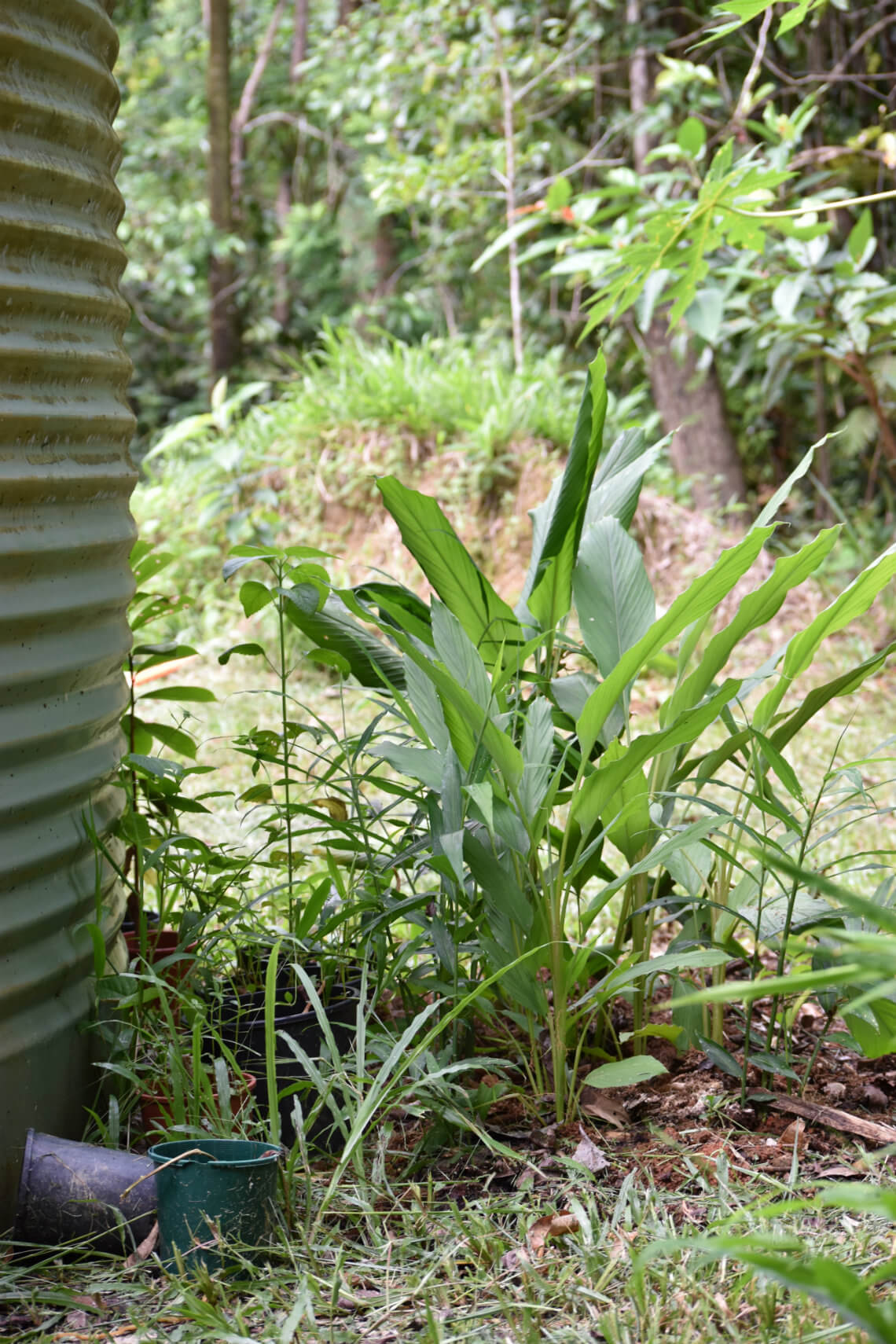
Growing Turmeric in a Pot
Growing turmeric in a pot, either indoors or outdoors, will protect it from cold weather. If your pot is outdoors, you can move it around to make the most of sunny spots. If it is indoors, you can avoid the cold weather altogether.
Growing this herb in a pot is easy; you need to keep the ambient temperature around 20°C and follow these simple steps:
Get some pots that are at least 30 cm deep and wide;
Buy some rhizomes from your local market or supermarket;
Break a piece off your rhizome with at least two eyes;
Fill your plant pots with moist, well-drained, nutrient-rich soil;
Push your rhizome about 5 cm into the soil, with the eyes facing upwards;
Water the pot well and wait for your plant to grow.
Your rhizomes should be ready to harvest in 8 to 10 months, the same as if you had planted them in the ground.
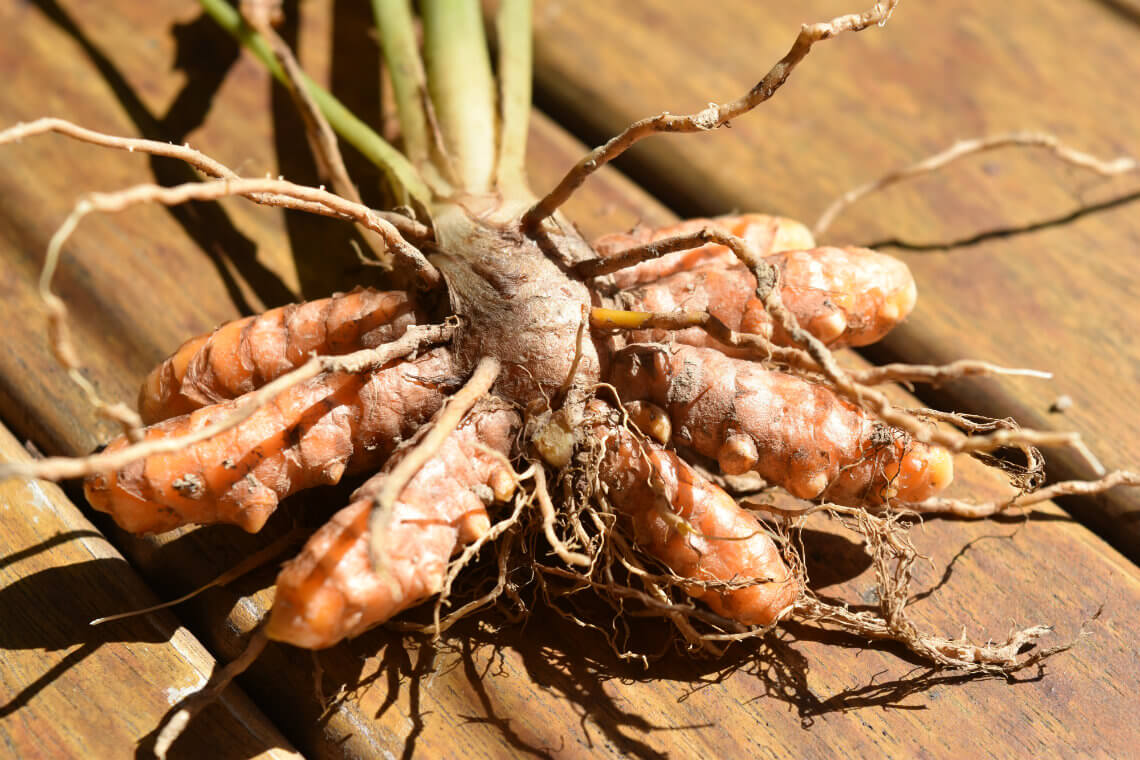
Preparation for Use
You can dig turmeric rhizomes up and use them straight away. Just wash off the dirt, grate or chop the roots, and add them to your meal. Eat fresh rhizomes within a few weeks of harvest, as they will dry out quickly.
You can also make turmeric powder. Making turmeric powder allows you to enjoy your harvest all year round. To prepare your own, you will need to:
Boil the roots for 30-45 minutes;
Peel the rhizomes (use gloves – your hands will turn yellow!);
Dry the roots naturally or in a hot oven;
Grind the peeled, dried rhizomes to make the powder.
Removing the skins immediately after boiling is more manageable than when the roots are dry. Avoid using a vegetable peeler to remove the dried skins, as it will result in more turmeric to grind.
In addition to the roots, the leaves and flowers are edible and can be eaten fresh. Use scissors or a knife to cut the desired amount from your plant, and then rinse before consuming.
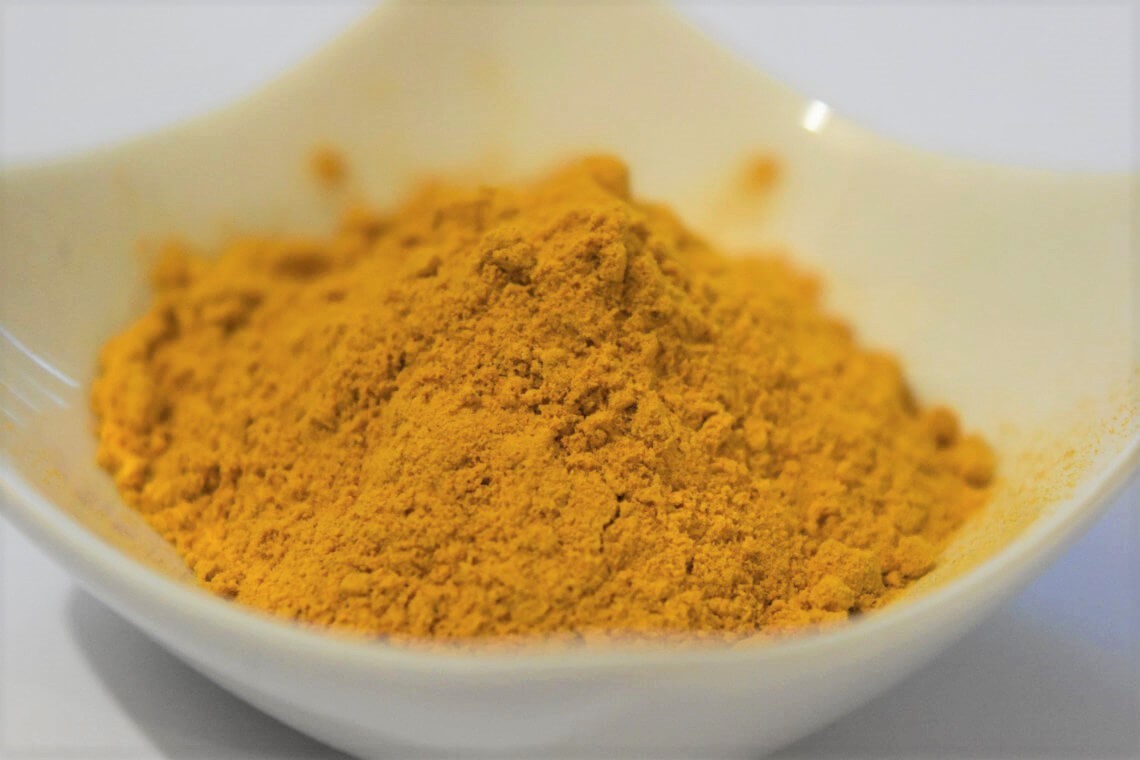
Cooking with Turmeric
Turmeric is a well-known ingredient in curries, such as Indian or Indonesian yellow curries. It adds a bright yellow colour and peppery flavour to dishes. However, this plant is truly versatile, and you can consume it in many other ways.
Try using turmeric as a rub on meats; it is an excellent addition to a roast chicken, duck or turkey. Sprinkle some onto your plain rice to turn it golden yellow. Toss it through your roasted potatoes, cauliflower, or steamed greens. Use fresh roots for more zing compared to the dried spice.
Turmeric leaves can be added to salads or wrapped around meats and vegetables in baked or steamed dishes. The leaves have a less pungent taste than the spice, and the flowers make a sweet addition to salads or pasta.
Turmeric is well known for its use in savoury dishes, but it can also be used in sweet ones. It is an essential ingredient in “Sfouf,” a Middle Eastern semolina cake eaten on special occasions such as birthdays. It is also a tasty ingredient in hot drinks, ice cream, and yoghurts.
Turmeric is an essential ingredient in ‘golden milk’, a popular immune-boosting remedy. Golden milk also contains coconut milk, ginger, cinnamon and black pepper, which is said to help absorb turmeric.
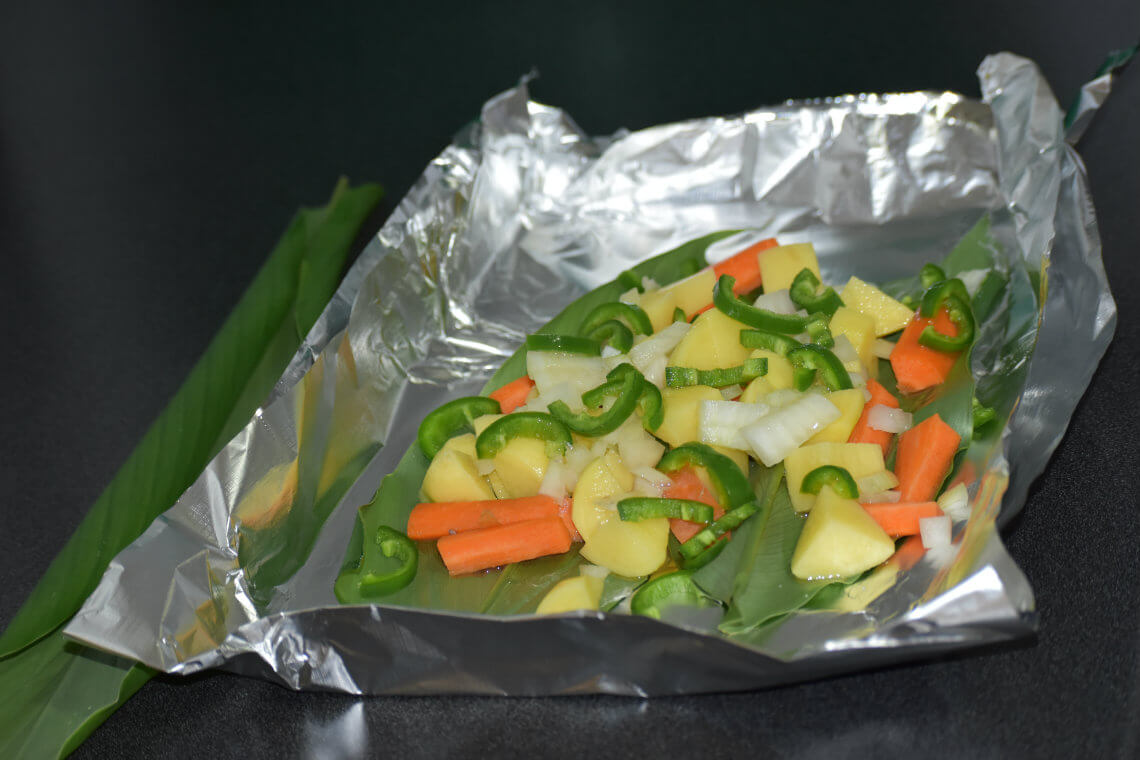
Medicinal Uses
Turmeric has many health benefits and is touted as a ‘superfood’. It has anti-inflammatory, antibacterial, and antiseptic properties. It is also an antioxidant, digestive, and diuretic agent.
Turmeric has been an essential part of traditional medicine for millennia. It has long been used in Ayurvedic medicine to purify the blood and treat skin conditions. Some people even think it can cure cancer, but no clinical evidence exists to confirm this.
Turmeric is beneficial for the digestive system and relieves the symptoms of irritable bowel syndrome. Its anti-inflammatory properties may also reduce arthritis symptoms and other inflammatory conditions.
Turmeric has been used as an antidepressant and may play a protective role against Alzheimer’s disease. Although modern science is reluctant to confirm these health benefits, consuming this tasty plant certainly can’t hurt.
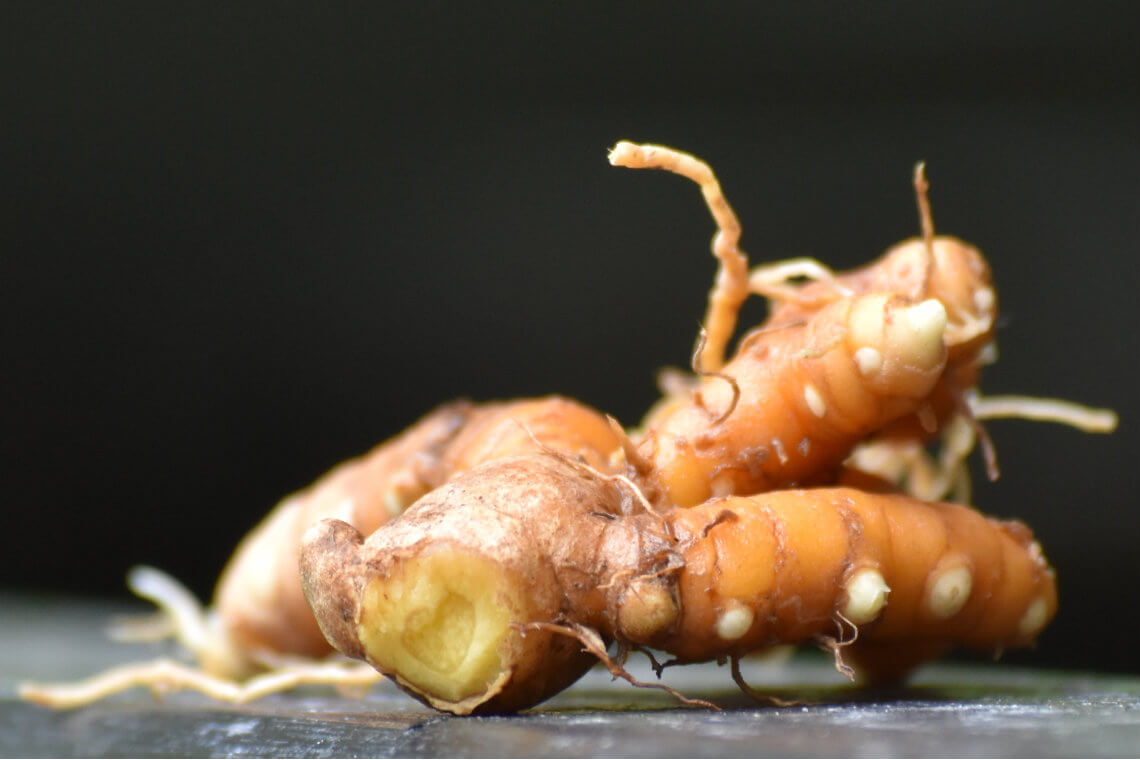
Religious Uses
Turmeric has spiritual significance for some religions but is particularly important to Hindus. Due to its bright yellow colour, the “golden spice” or “spice of life” represents the sun (and therefore the sun gods).
Turmeric is an essential part of Hindu weddings. The yellow powder is mixed into a paste and applied to the bride and groom’s skin. This “haldi” ceremony signifies the ritual purification of the couple and acts as a blessing for fortune and prosperity.
Hindu women often apply the yellow powder to their faces to emulate the Goddess Durga, who is “haldi-mukhi” (turmeric-faced). She is "radiant like the sun" and connected to all things yellow, including gold, the harvest, and lions.
Spiritually, turmeric balances the body's energies. Therefore, it is important for purification rites and rituals. Some Ganesh idols are made from it, and turmeric water is used as an offering to the Goddess Kali.
In some cultures, women receive turmeric as a gift during pregnancy. It is a symbol of fertility, inner purity and pride. You can also wear the rhizome as an amulet for good luck and prosperity.
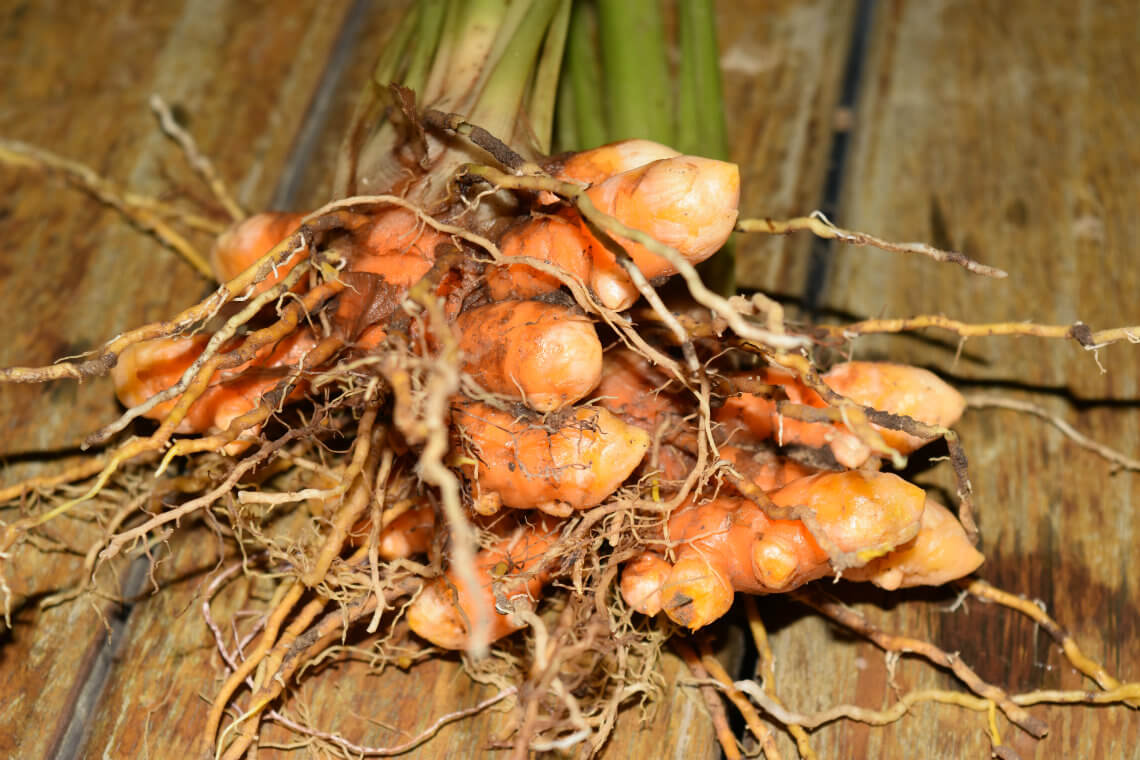
Turmeric as a Dye
Turmeric root makes vivid natural dyes, oils, and paints. If you get some on your hands when cooking, you will soon appreciate why! The strong yellow stain comes from curcumin, a chemical found in the rhizome.
Before chemical or synthetic dyes were introduced, many fabrics were coloured using turmeric. Traditionally, monks used it to stain their robes orange, and Hindus used it to dye the marriage cloth.
Turmeric is also used to colour food. The orange-yellow food additive “E100” comes from curcumin. This natural colourant is becoming more popular with the push to remove chemical additives from foods.
You can also dye plain paper to create “turmeric paper”. The paper acts as an indicator of acidity and alkalinity. It remains yellow when dipped in acidic or neutral solutions or turns reddish-brown in alkaline solutions.
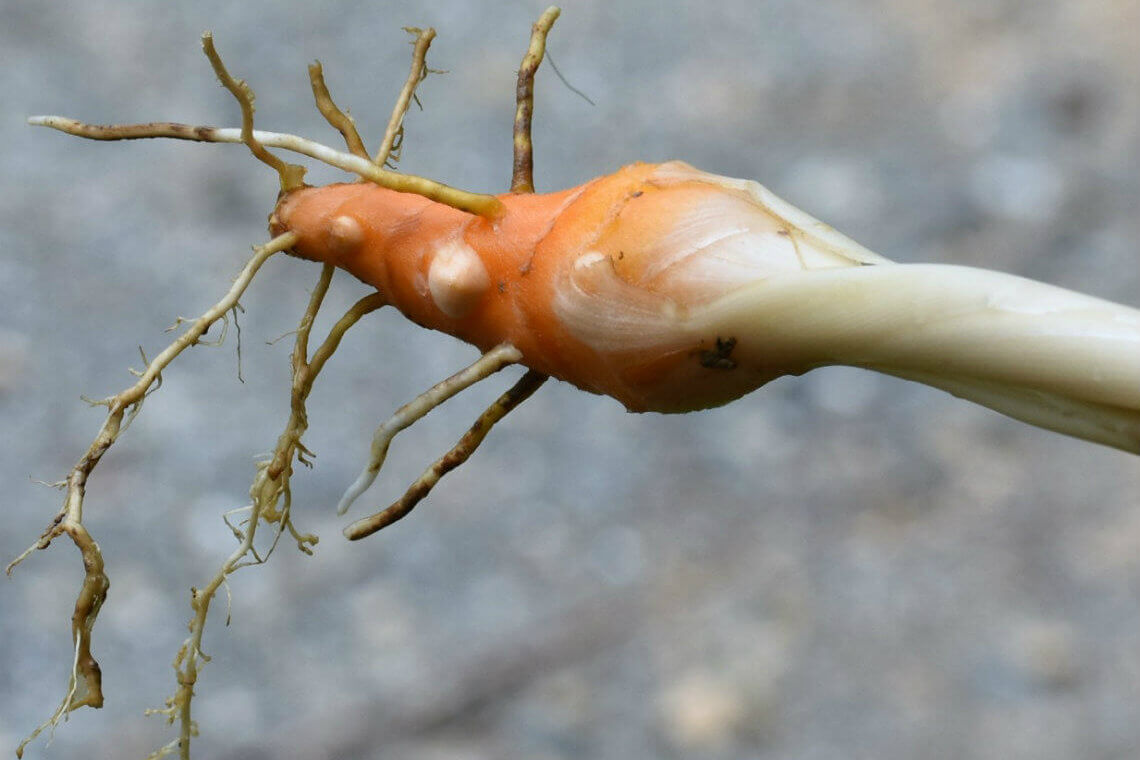
Turmeric in Beauty Products
Turmeric has been an ingredient in beauty products for thousands of years. It adds a natural yellow colour to make-up and hair dyes and imparts antibacterial and anti-inflammatory benefits to skin and hair care products.
Turmeric improves uneven skin tone and brightens skin. It is beneficial for acne, inhibiting bacteria, removing oil from the skin, and reducing scarring. It is a natural exfoliator and assists in removing dead skin cells, making it a great addition to facemasks.
Curcumin, the active ingredient in turmeric, may help prevent hair loss. It also has antifungal, antiseptic, and antibacterial properties that soothe many scalp conditions, including dermatitis and dandruff.
Turmeric is a natural alternative to harsh hair colourants. It adds a bright tint to light-coloured hair and a subtler tint to darker hair. Using turmeric in hair care products also makes hair soft, flexible, and shiny.
Conclusion
Turmeric is a genuinely versatile plant and makes a great addition to any home garden. It looks good and is easy to grow, even in pots. See if you can get some rhizomes from your local supermarket and plant them today!
Try adding this health-boosting plant to your meals and hot drinks. Or make it part of your beauty regime in a face mask or scrub. It is so versatile that you can use it everywhere, from your kitchen to your bathroom.
